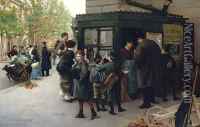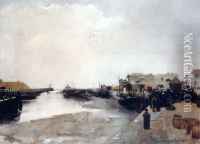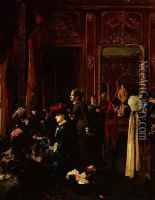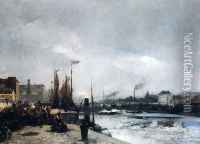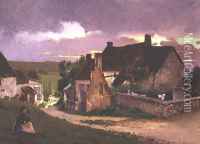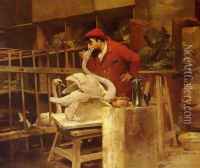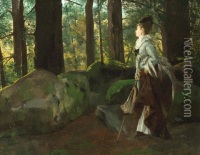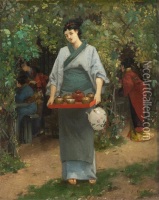Louis Robert Carrier-Belleuse Paintings
Louis-Robert Carrier-Belleuse was a prominent French sculptor and painter, born in Anizy-le-Château, Aisne, France, in 1848. He was the son of the famous sculptor Albert-Ernest Carrier-Belleuse, which exposed him to the world of art and sculpture from an early age. Despite the shadow of his father's considerable reputation, Louis-Robert carved out his own niche in the art world with his distinctive style and innovative techniques.
Carrier-Belleuse initially trained under his father before studying at the École des Beaux-Arts in Paris. His education and lineage provided him with opportunities to work on significant projects, including contributions to the decoration of the Paris Opéra and the Hôtel de Ville, Paris, which were hallmarks of the era's grandeur in French architecture and art.
Louis-Robert Carrier-Belleuse's work was characterized by a finesse and a detailed understanding of the human form, much like his father's. However, he also embraced the Art Nouveau movement, which was gaining momentum during his career. This inclination towards Art Nouveau allowed him to explore more fluid, organic forms and incorporate them into his sculptures and decorative arts.
Despite his talent and contributions to French art, Louis-Robert Carrier-Belleuse did not achieve the same level of fame as his father. However, his works were appreciated by his contemporaries and continue to be valued by collectors and historians for their beauty and historical significance.
Throughout his career, Louis-Robert exhibited his works at the Paris Salon, where he gained recognition and accolades for his artistic abilities. His sculptures often depicted allegorical themes, classical subjects, and figures from mythology, rendered with a romanticism that was both delicate and expressive.
Louis-Robert Carrier-Belleuse passed away in 1913, leaving behind a legacy that, while overshadowed by his father's fame, remains significant in the annals of French art history. His contributions to sculpture and decorative arts during a time of stylistic transition are a testament to his skills and artistic vision.




